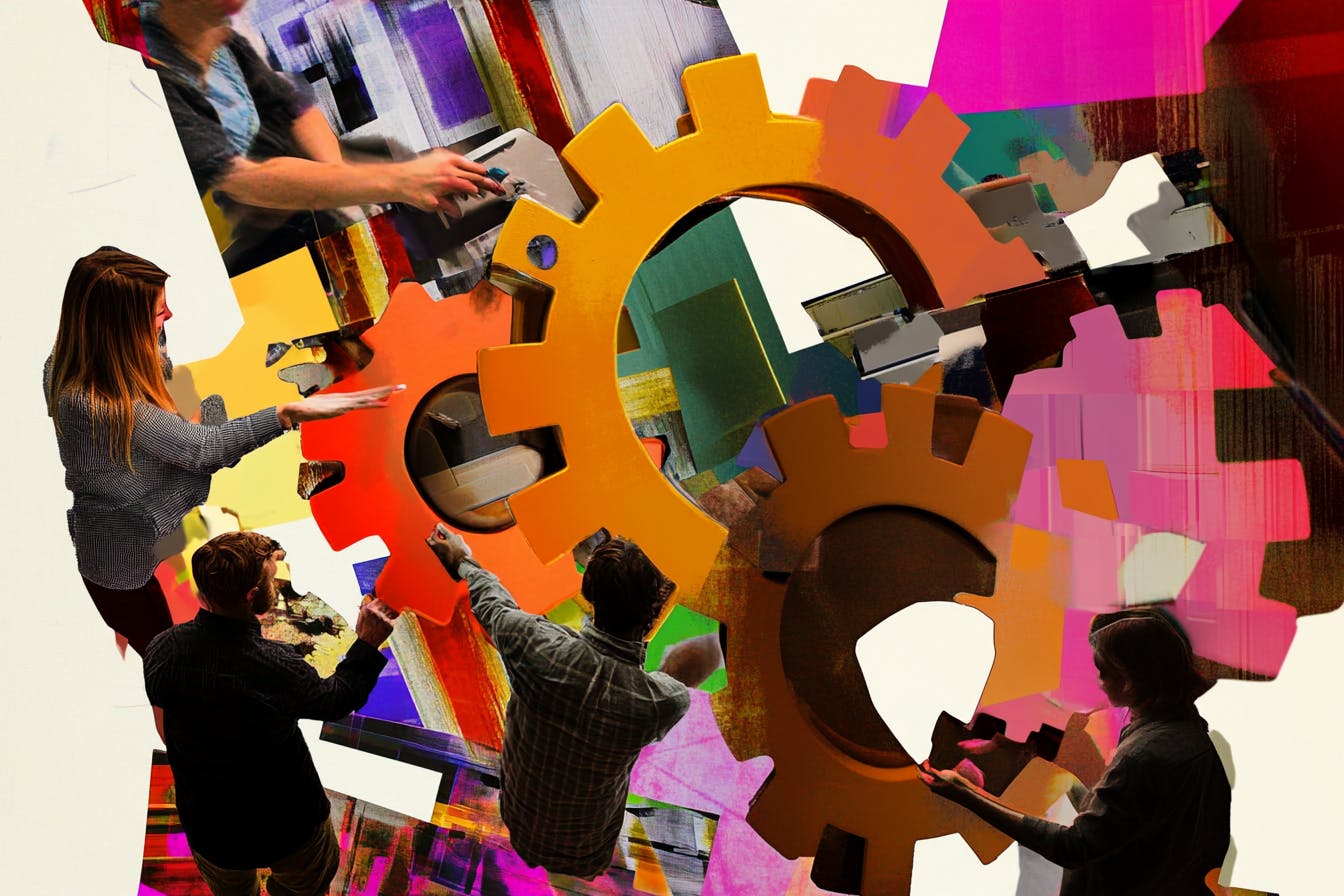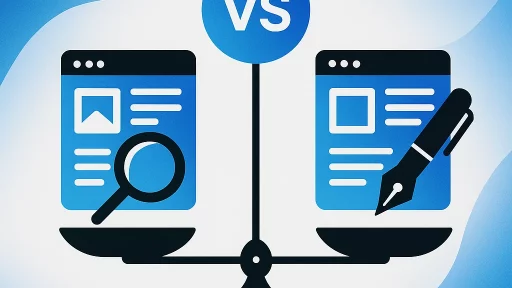Here’s what you need to know about social media content strategy in 2025:
- AI-powered tools will revolutionize content creation and analysis
- Short-form videos will dominate platforms like TikTok and Instagram Reels
- Augmented Reality (AR) will enhance user experiences and boost engagement
- User privacy will become a top priority for platforms and brands
- Targeting specific niche audiences will be more effective than broad campaigns
Key takeaways:
- AI will help create content faster and provide deeper audience insights
- Short videos (under 60 seconds) will be the most popular content format
- AR features will increase brand loyalty and purchase intent
- Stricter privacy laws will change how brands collect and use data
- Micro-influencers and niche platforms will offer better ROI than mass marketing
| Trend | Impact on Brands | User Benefit |
|---|---|---|
| AI Tools | Faster content creation, better insights | More personalized experiences |
| Short Videos | Higher engagement rates | Quick, entertaining content |
| AR Features | Increased brand interaction | Try before you buy, interactive experiences |
| Privacy Focus | More transparent data practices | Greater control over personal information |
| Niche Targeting | Better ROI on marketing spend | More relevant content and ads |
To stay ahead in 2025:
- Experiment with AI tools for content creation and analysis
- Prioritize short-form video content
- Explore AR features for your products or services
- Be transparent about data usage and prioritize user privacy
- Focus on building engaged communities rather than chasing follower counts
AI-Powered Content Tools
AI is changing the game for social media content. By 2025, it’ll be a must-have for brands wanting to stay competitive and keep their audience hooked.
Here’s the scoop on AI in social media:
Content Creation on Steroids AI churns out posts, captions, and even images WAY faster than humans. It’s a time and money saver. Sprinklr‘s AI tools? They can slash content production costs in HALF.
Personal Touch, Mass Scale AI digs into user data to serve up custom content for different audience groups. Netflix does this with show recommendations, saving a cool $1 billion by keeping subscribers around.
Autopilot for Posting and Engagement AI handles scheduling, comment replies, and even whips up ad variations. Marketers can focus on the big picture stuff.
Data Insights That Matter AI crunches tons of social data to spot what’s hot and predict content winners.
Content That Fits Like a Glove Tools like Jasper.ai offer templates to create content that’s just right for each platform.
Want to rock AI in your 2025 strategy? Here’s how:
- Baby steps: Try one AI tool for something simple, like brainstorming post ideas.
- Human touch still matters: Use AI as a springboard, then add your brand’s flavor.
- Stay in the loop: AI tools evolve fast. Keep an eye out for new tricks they can do.
2. Short Videos Take Over
By 2025, short videos will dominate social media. They’re quick, addictive, and perfect for our shrinking attention spans.
TikTok and Instagram Reels are leading this charge:
| Platform | Max Length | Key Feature | Monthly Users |
|---|---|---|---|
| TikTok | 10 min | "For You" algorithm | 1 billion |
| Instagram Reels | 90 sec | Existing follower base | 675.3 million |
TikTok’s algorithm is KILLER. It serves up content you can’t resist, keeping you glued to your screen. Reels lets creators tap into their Instagram followers, giving them a built-in audience.
Why are short videos so effective?
- They’re quick to watch
- 68% of viewers finish them
- Algorithms LOVE them
Want to crush it with short videos? Here’s how:
- Hook viewers FAST
- Use trending music
- Add captions (85% of Facebook videos are watched on mute)
- Mix it up: behind-the-scenes, testimonials, quick tips
The numbers don’t lie:
- 82% of web traffic in 2022 was video
- TikTok searches up 800% in 5 years
- Interest in TikTok ads exploded 99x+ in 5 years
Bottom line: If short videos aren’t part of your 2025 strategy, you’re falling behind. Big time.
3. Using Augmented Reality (AR)
AR is changing the game for social media content in 2025. It’s not just a fancy trick – it’s reshaping how we interact with brands and each other online.
Here’s what you need to know:
AR adds digital elements to the real world through your phone’s camera. Think Snapchat filters, but WAY more advanced.
By 2025, AR will be everywhere on social media. Why? The numbers speak for themselves:
- 57% of people are more likely to buy from brands using AR
- 64% say AR boosts brand loyalty
- 40% are more likely to share AR content than regular posts
Smart brands are already jumping on board:
Maybelline Thailand’s #SpreadGoodVibes campaign used AR filters on Facebook and Instagram for makeup tutorials during COVID-19. The result? Huge engagement.
Mini (the car company) let users place a 3D car model anywhere. This simple AR trick tripled ad recall and boosted brand favorability by 11x.
Gucci Beauty created a virtual garden on Snapchat for their Bloom fragrance. Users could explore and find hidden perfume bottles.
By 2025, expect to see:
- Virtual try-ons for clothes, makeup, and furniture
- AR-powered games and scavenger hunts from brands
- Location-based AR experiences (think Pokemon Go, but for marketing)
The key? Make it useful, not just flashy. AR should solve problems or add real value.
IKEA‘s AR app is a perfect example. It lets you see how furniture looks in your actual room before buying. That’s helpful.
| AR Feature | User Benefit | Brand Benefit |
|---|---|---|
| Virtual try-ons | See how products look | Fewer returns, more sales |
| AR games | Fun, shareable content | Increased engagement |
| Location-based AR | Discover nearby offers | Drive foot traffic |
If you’re not thinking about AR for your 2025 social media strategy, you’re falling behind. It’s not just cool – it’s becoming expected.
sbb-itb-43d9647
4. Focus on User Privacy
By 2025, user privacy will be a big deal in social media. Why? People don’t trust how their data is being used.
Remember the Facebook-Cambridge Analytica mess in 2018? 50 million users’ data was taken without permission. Yikes.
Now, 90% of Americans worry about their online data. This is changing how social media works:
1. Clear Data Policies
No more confusing terms. Companies need to spell out:
- What they collect
- How they use it
- Who sees it
2. User Control
Users want power over their data:
- Easy privacy settings
- Data download options
- Account deletion
3. Ask Before Marketing
No more automatic opt-ins. Brands need permission to use data. GDPR is making this happen:
| GDPR Violation | Potential Fine |
|---|---|
| Minor | Up to €10 million or 2% of annual revenue |
| Major | Up to €20 million or 4% of annual revenue |
4. Better Security
Platforms are upping their game:
- Two-factor authentication
- Encrypted messages
- Regular security checks
5. Privacy Features
New tools put privacy first. Like Instagram’s "Close Friends" for sharing with a small group.
"The American Privacy Rights Act of 2024 (APRA) will set new rules for businesses."
This law will shake things up fast.
For marketers, it’s about quality over quantity. Less data, used smarter.
To win in 2025:
- Be open about data use
- Give value for data
- Make privacy a selling point
5. Targeting Specific Groups
In 2025, social media marketing isn’t about reaching everyone. It’s about reaching the RIGHT people. Here’s how it works:
Micro-Influencers: Small Audience, Big Impact
Forget celebs with millions of followers. Brands are now teaming up with micro-influencers who have smaller, but super-engaged audiences.
Why? These influencers REALLY know their followers. They can speak directly to them, leading to better results for brands.
| Influencer Type | Follower Count | Avg. Engagement Rate |
|---|---|---|
| Nano | 1K – 10K | 4% |
| Micro | 10K – 100K | 1.7% |
| Macro | 100K – 1M | 1.3% |
| Mega | 1M+ | 1.1% |
See that? Nano-influencers have the highest engagement rate. They’re becoming hot property for brands wanting to connect with specific groups.
Niche Platforms: Your Tribe’s Hangout
New social media platforms for specific interests are popping up everywhere. Brands are jumping on these to reach EXACTLY who they want.
For example:
- A vegan food company might focus on a plant-based diet app instead of Facebook
- A tech startup could target developers on GitHub rather than Instagram
AI-Powered Personalization
AI is helping brands create laser-targeted content. It looks at what users like, how they behave online, and what they buy to make personalized experiences.
Netflix does this well. They use AI to pick show thumbnails based on what you’ve watched before. This small change can make a BIG difference in what you choose to watch.
Hyper-Local Targeting
Brands are zooming in on specific neighborhoods or communities. This works great for local businesses or bigger companies running area-specific campaigns.
A coffee shop chain might create different social media content for each city they’re in, talking about local events or using local slang.
Action Steps for 2025
- Find micro-influencers in your niche
- Check out new, niche social platforms where your audience hangs out
- Use AI tools to personalize your content
- Create hyper-local campaigns if it fits your business
Conclusion
Social media’s evolving fast. Here’s what’s big for 2025:
- AI-powered content creation
- Short-form video dominance
- AR enhancing user experiences
- Privacy taking center stage
- Niche targeting over broad campaigns
Why care? 4.59 billion people used social media in 2022. That’s a lot of potential customers.
But here’s the kicker: 90% of users follow at least one brand. Competition’s tough.
What can you do?
- Use Google Trends and Hootsuite to spot trends
- Survey your audience and check comments
- Follow social media blogs and set up Google Alerts
Time matters with trends. Adapt fast for better results.
Here’s how different influencers stack up:
| Influencer Type | Follower Count | Avg. Engagement Rate |
|---|---|---|
| Nano | 1K – 10K | 4% |
| Micro | 10K – 100K | 1.7% |
| Macro | 100K – 1M | 1.3% |
| Mega | 1M+ | 1.1% |
Smaller isn’t always worse. Nano-influencers often have the most engaged followers.
The takeaway? Social media marketing’s here to stay. It’s just changing. Stay on top of these trends, and you’ll be ready for 2025.
FAQs
What are the social media trends in 2025?
In 2025, social media is all about:
- Short videos: TikTok, Instagram Reels, and YouTube Shorts are king.
- AI tools: Brands use AI to understand their audience and create content.
- Micro-influencers: Companies prefer niche influencers over big names.
- Social shopping: Buying stuff directly on social platforms is the new norm.
- Community focus: Brands build loyal groups around their products.
Does social media marketing have a future?
You bet it does. By 2025, AI in marketing will be as common as email. Marketers will use AI for:
- Making content
- Helping customers
- Crunching numbers
- Creating personalized experiences
This change will make social media marketing work better and smarter.
What is the future of social marketing?
Social marketing is heading towards:
1. AI everywhere
AI tools will help create content, analyze data, and understand customers better.
2. Real, authentic content
Brands will focus on genuine stories from employees and customers.
3. Owned channels
There’s a shift towards email and SMS marketing to control data better.
4. Personalization
Content will be tailored using advanced analytics and machine learning.
5. Social commerce
Buying stuff directly on social platforms will become easier than ever.
Carlos Gil, a marketing expert, says: "AI will become as common as email marketing is today."
To get ready for these changes:
- Try out AI tools for different marketing tasks
- Build up your email and SMS lists
- Create exclusive content or paid newsletters
- Get your employees and customers to be brand advocates






